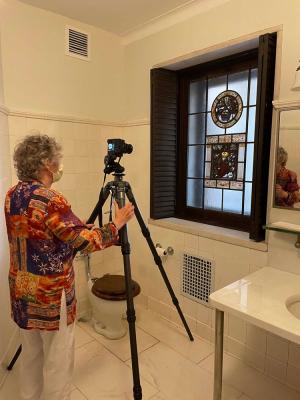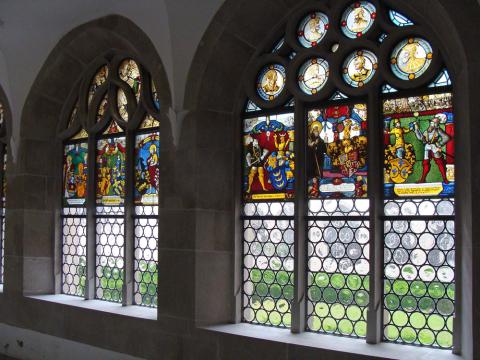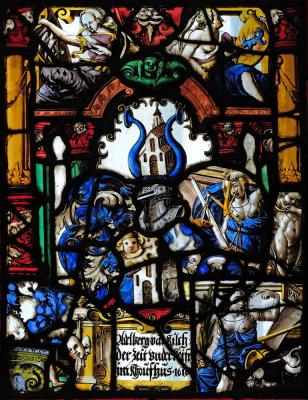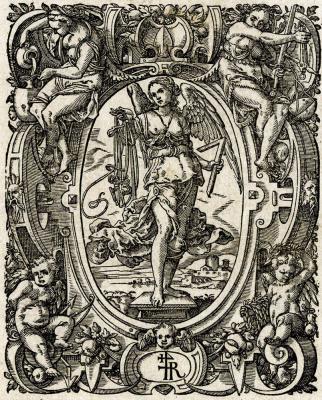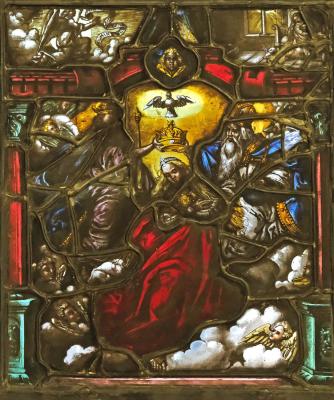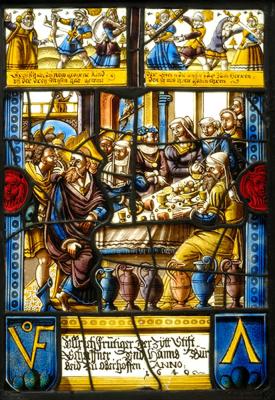Building and decorating J. Pierpont Morgan’s library was a carefully considered endeavor. After construction was complete, Morgan had panels of historic stained glass inset into the windows of his study, the librarian’s office, and the East Room, as well as in smaller spaces such as his bathroom and his manuscript vault. This campaign transformed the plain fenestration into a richly colored display of important works of stained glass, which cast shafts of jewel-toned light across the rooms on a bright day. My task, as a historian of stained glass, was to examine these windows and study the panels, many of them high up or concealed by curtains or shutters, and to encourage consideration of them as more than room decoration, but as works of art (figure 1).
At the Morgan, I focused my attention on eighteen panels of Swiss origin. Averaging around sixteen by twelve inches, these panes celebrated marriage alliances, trade guilds, and professions and also represented municipalities. Many show scenes of agriculture or commerce, recalling illustrations in medieval Books of Hours, and feature common activities such as driving teams of horses, transporting goods, or the comings and goings of businessmen in a counting house. They also demonstrate the interconnectedness of the arts: these stained-glass panels share common models and ideologies with prints and illustrated books.
Switzerland’s initiation of a democratic form of government was among the earliest in Europe. The original Swiss Confederation numbered Eight Cantons (or administrative divisions), which gained their independence between 1291 and 1353. After the Swabian War of 1499 when the Confederacy defeated the forces of the House of Hapsburg, the country was essentially a sovereign nation. The need for self-sufficiency for so much of the population across a mountainous landscape encouraged cooperative endeavors. The windows became ubiquitous elements in a social exchange between members of families and associations. Such small, independent panels set into larger windows were prevalent in homes and public buildings such as town halls, law courts, inns, or even churches from the late fifteenth through the seventeenth century in Switzerland, Southern Germany, and the Upper Rhine. Today, several Swiss sites still contain their original glass, including the Benedictine abbey of Muri (figure 2) about twelve miles southwest of Zurich.
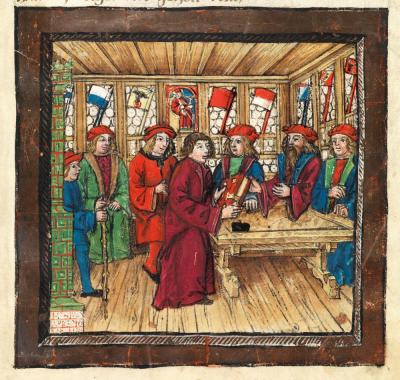
Figure 3: Diebold Schilling the Younger of Lucerne, Chronicle of Lucerne, 1513. Korporation Luzern, Lucerne, S 23 fol., p. 13 (detail).
A rich source for understanding the vital role played by windows of this era appears in the Chronicle of Lucerne (Luzernerchronik). Produced in 1513 by Diebold Schilling the Younger of Lucerne, the manuscript contains 443 illustrations within its 688 pages that record the history of the Swiss Confederation. An illustration at the beginning shows the author presenting his chronicle in a council chamber (figure 3). The bullseye windows depict the arms of the members of the Swiss Confederation. On the rear wall, from left to right, are the banners of Lucerne (white over blue), Uri (bull’s head), Schwyz (red with a small cross), and Solothurn (red and white). These panels of civic entities became almost obligatory. Given from one locality to another, they encouraged reflection on the bonds of unity and the mutual dependence of Swiss institutions.
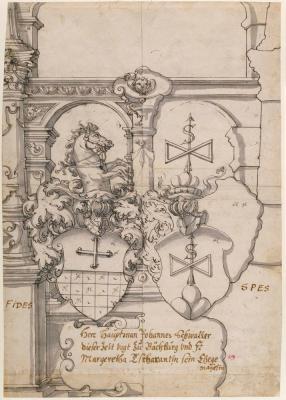
Figure 4: Hans Jacob Plepp, Stained Glass Design with Two Coats of Arms (recto), ca. 1590–1595. J. Paul Getty Museum, Los Angeles, 91.GG.69.
Understanding the method of their creation helps explain the phenomena of these small panels. The process began with a patron commissioning an artist. (In many smaller towns, the glass painter often exercised another occupation, such as innkeeper, as well.) The artist would produce a sketch, known in medieval times as the vidimus, Latin for “we have seen.” The implicit “we” expresses the collaborative and reciprocal process between the maker and the user. A late sixteenth-century, pen-and-ink drawing for a window by Hans Jacob Plepp (ca. 1557–ca. 1597) (figure 4) contains only a portion of the design; there was no need to repeat drawings of elaborate architectural decoration once an exemplar was produced. In the inscription panel, we read the agreed-upon text in German: “Captain Johannes Schwaller, current governor of Bächburg and Margeretha Tscharantin, his wife.” We do not see the calligraphy as it will be rendered in the cartouche. The allegorical virtues are named, not drawn: Fides (Faith) and Spes (Hope). Arguably, the client had been shown for approval other drawings of these stock figures in Swiss glass of that era. The sketch is a reasonable size for Swiss panels of the time, 16 11/16 x 11 5/8 inches, so we can presume that it is a one-to-one ratio. Such imagery parallels the still popular depiction of nobility and high officials, such as the Arms Cardinal Albrecht von Brandenburg (figure 5) from the da Costa Hours illuminated by Simon Bening (1483–1561).
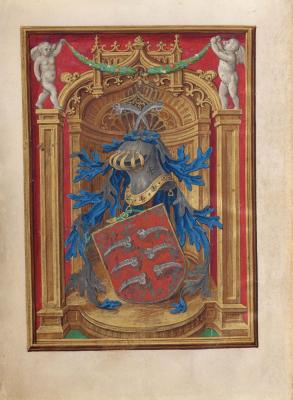
Figure 5: Da Costa Hours, illuminated by Simon Benning, ca. 1515. Morgan Library & Museum, New York, MS M.399, fol. 1v.
Once the design was approved, the workshop fabricated the panel. Sheets of glass were split into the required sizes for the segments in the panel. In this era, artisans used a hot iron to score the glass after which cold water would initiate a break. Multiple breaks, followed by a process called grozing, nibbling at the sides, resulted in appropriately sized pieces. The vitreous paint for stained glass is composed of a low-firing, essentially clear glass-flux and opaque metallic oxides, generally iron or copper. This is mixed with a binder and then applied with a brush in a wide range of painting styles. After the segments of glass are painted, they are fired in a kiln to approximately 1250° F. As the glass-flux softens and the surface of the glass sheet becomes tacky, they fuse to create a permanent bond. They are then set into lead came strips, which can easily bend around the glass, soldered at the joints, and set into a frame.
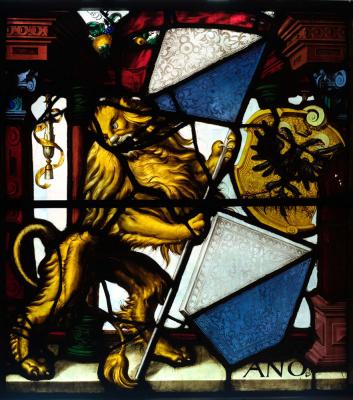
Figure 6: The Arms of Zurich, 1618. Morgan Library & Museum, New York.
Figure 7: The Arms of Vankilch, 1616. Morgan Library & Museum, New York.
Figure 8: Tobias Stimmer, Title-page (detail) to Niels Hemmingsen, Commentaria in Omnes Epistolas Apostolorum (Strasbourg: Rihel, 1586). British Museum, London, 1900,1019.52.
The north wall of the East Room displays two superbly executed panels dated 1618 and showing the Arms of the city or canton of Zurich (figure 6), each with a lion as a supporter. In heraldic terms, the Arms of Zurich is represented as “per bend argent and azure” and is shown with the double-headed eagle of the Holy Roman Empire. The lion’s companion holds a sword and an orb with the arms.
The Arms of Von Kilch (figure 7), on view on the west wall of J. Pierpont Morgan’s Study, is dated 1616 and contains glass from several sources. This kind of amalgam was not unusual for later restorers faced with losses. The panel is largely intact in the upper three quarters. The figures of Justice and Peace on the lower right as well as the putto are from another coeval source. The shield and elements to the left of the inscription plate appear to be other contemporary stopgaps or repairs. All segments, however, are of exceptional quality, showing refined craftsmanship and highly skilled firing of the paint.
Adelberg van Kilch, documented as a citizen in Basel in 1605, is named in the inscription as an official of a counting house; the accompanying allegorical figures likely refer to his wise management. At the upper right, a female holds a shield with a salamander. To the left, her companion holds a shield with the device of a Crane in its Vigilance. The bird holds a stone in its claw, ensuring that it will not fall asleep.
The composition and style recall the work of Tobias Stimmer (1539–1584), a highly influential designer for books, single prints, and stained-glass panels in the Upper Rhine. In the late 1560s, Stimmer worked for editors and printers in Zurich and Strasbourg and in 1570 settled permanently in Strasbourg. His enormously successful collaborative work with the author Johann Fischart, Neue künstliche Figuren biblischer Historien, appeared in 1576, published in Basel by Thomas Gwarin (see PML 78265). Both text and image are set within elaborate Renaissance frames with allegorical figures. Stimmer’s title page (figure 8) to Niels Hemmingsen’s Commentaria in omnes Epistolas Apostolorum (Strasbourg, Rihel, 1586) shows Temperance and Justice set within the volutes, as in the Morgan panel. A panel in the Detroit Institute of Arts shows a similar technique as well as the elegant allegorical figures of Justice on the left and Temperance on the right.
The Coronation of the Virgin Mary (figure 9) is set into the window of Morgan’s bathroom; the back of the panel is visible from the landing as you enter the library from the piazza. It is dated about 1650 and shows the Annunciation at the top. On the left, the angel Gabriel comes to greet the Virgin with God’s request that she become the mother of the Messiah (Luke 1: 26–38). To the right is the Virgin at prayer. In the center, the Virgin is crowned by the Trinity of Father, to right, Son, to left, and Holy Spirit, above. Albrecht Dürer’s woodcut of The Assumption and Coronation of the Virgin (figure 10) appears to have established the model for many Swiss stained-glass panels devoted to this theme. This window shows a combination of pot-metal glass with enamel.
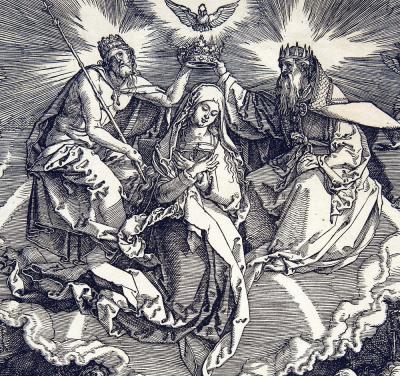
Figure 10: Albrecht Dürer, The Assumption and Coronation of the Virgin, from The Life of the Virgin, 1510. Metropolitan Museum of Art, New York, 60.576.2.
The Wedding at Cana with the Arms of Brügger (figure 11) can be seen in the study, at the upper level of the window at right on the west wall. Dated 1649 the window reveals fascinating details about artistic production for numerous clients. The donors of the Morgan panel are identified as Mathÿs Brügger and Catrÿna Furrer, who probably lived somewhere in the canton of Bern. The artist has been identified through a signed panel of the same composition, dated nine years earlier. Kaspar Lohner (1587–1643) was a glass painter in Bern. Of the nine panels by Lohner presently in the Historical Museum of Bern, The Wedding at Cana (figure 12) duplicates the design of the Morgan panel. Dated 1640 and signed with the monogram CL, the panel shows not only the same composition but the same system of enamel colors on uncolored glass and design using letters in the shield. Its dimensions of 11 15/16 x 8 1/8 inches are almost exactly that of the Morgan panel.
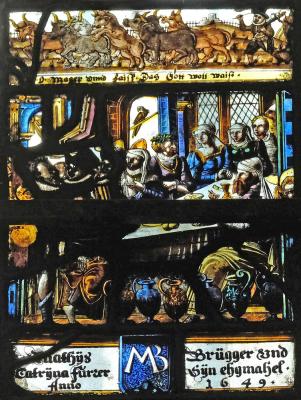
Figure 11: Kaspar Lohner, The Wedding at Cana with the Arms of Brügger, 1649. Morgan Library & Museum, New York.
The image shows Christ’s first public miracle, the conversion of water to wine (John 2:1–22). Invited to a wedding, Christ’s mother, Mary, asks her son to help the host who had run out of wine. Jesus orders that six water pots, shown at the bottom of the scene, be filled with water, which he then transforms into wine. A comparison with Lohner’s Wedding at Cana of 1640 allows us to see the original disposition. Christ is seated on the left wearing a halo in the shape of a canted square. He turns to a man who is presumably the chief steward to give orders that the jugs be filled with water. Mary is seated to the right, next to the bride who wears a wreath on her head. Her gesture communicates that she is the catalyst for the miracle, as she turns to address her son.
Pierpont Morgan purchased the panel along with seven others in 1904 from the renowned collection of Émile Gaillard (1821–1902). Gaillard was a member of a banking family in Grenoble and headed its Paris branch. A highly cultivated individual, he was the favorite pupil of the composer Frédéric Chopin, who dedicated a piece to him. He was a passionate admirer of art and over the years, he built up a considerable collection of Renaissance furniture, decorative objects, and other works. Gaillard took advantage of the expansion of Paris into its suburbs, building a “château” in the developing 17th Arrondissement in the northwest of the city. The house was largely inspired by the wing of the Château of Blois, built by Louis XII between 1498 and 1503. After his death, most of Gaillard’s collection was sold in an auction that lasted eight days. The sale included 141 works on glass, all of modest dimensions, including forty-eight roundels (monochromatic works on a single pane of glass) and thirty-one Swiss panels.
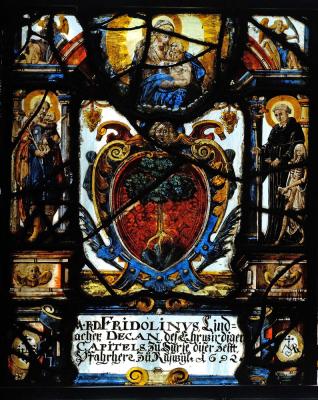
Figure 13: The Arms of Fridolin Lindacher with Saint Joseph and Saint Fridolin, 1692. Morgan Library & Museum, New York.
Two panels also from the Gaillard collection, dated 1695, are attributed to Hans Jakob Bucher of Sursee (active 1671-1711). The inscription for The Arms of Fridolin Lindacher (figure 13), also on view in the study, refers to “A. R. D. Fridolin Lindacher, deacon of the worthy city of Sursee; and pastor of Ruswil.” (Sursee is a municipality in the Canton of Lucerne, about twelve miles northwest of the city of Lucerne; Ruswil is located about five miles south of Sursee). In the center, to the left, is St. Joseph, Mary’s husband, and to the right is St. Fridolin, revered as the Irish missionary and the legendary founder of Säckingen Abbey just east of Basel. Fridolin’s frequent representation with a skeleton, which is also seen in this panel, derives from the legend that a wealthy landowner named Ursus had promised the saint his possessions after his death so that Fridolin could establish the abbey. The gift had not been legally recognized and upon Ursus’s death, his brother claimed the legacy. Fridolin awakened Ursus from his grave so that he could testify before the district court. A saint whose story was dear to administrators, Fridolin commonly appears in Swiss glass.
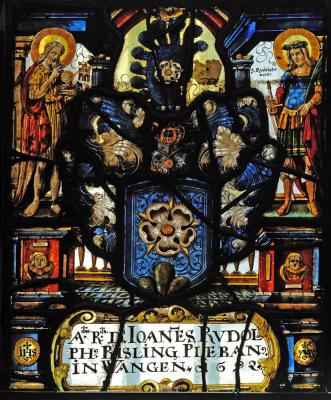
Figure 14: The Arms of John Rudolph Bisling with Saint John the Baptist and Saint Rudolph, 1692. Morgan Library & Museum, New York.
The Arms of John Rudolf Bisling (figure 14), on view nearby, shows an identical composition and style. Bisling, possibly a variation of Bissling, was a parish priest of Wangen [Gosswangen], adjacent to Sursee. He held the position of Lehrpriester, or Pleban, who performed pastoral care on behalf of the owner of the parish office or represented the priest. The position gave some independence in contrast to clerics who depended on a monastery or the local bishop. We see St. John the Baptist and St. Rudolf, Bisling’s name saints, to the left and right of the large coat of arms. Flanking the inscription plate are the monograms IHS (Name of Jesus) and MR (monograph for Maria Regina, Mary Queen of Heaven), as in the previous panel. The Metropolitan Museum of Art owns two panels from this same series executed by Hans Jakob Bucher in 1692: Arms of Johan Christoph Bissling (inv. 32.100.340) and Arms of Jodokus Cysat (inv. 14.40.735).
Both panels are restricted to uncolored glass with vitreous paint, silver stain, and enamel, a technique that grew in popularity in the seventeenth century. Enamel became a staple for Swiss production, almost entirely displacing colored pot-metal glass for many panels. The technique uses intensely colored ground-up glasses suspended in a liquid medium that is painted onto the base glass. Fused onto the glass surface, they frequently appear on the reverse of the glass as a slightly raised layer.
Not only are these panels a decorative enhancement to the rooms, but they are also a celebration of Morgan’s library and its purpose. Centuries after their creation, they were installed in the interior of a building whose contents celebrate the ideals of their Swiss creators: self-sufficiency, collaboration, and the interconnectedness of the arts.
Virginia Raguin
Distinguished Professor of Humanities, College of the Holy Cross, Emeritus, and Member of the International Corpus Vitrearum, American Committee, with the cooperation of Rolf Hasler, former member of the Corpus Vitrearum, Swiss Committee.

